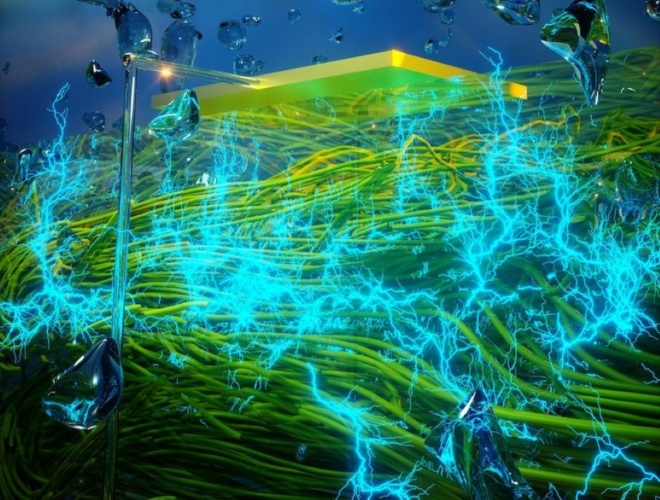
The laboratories of electrical engineer Jun Yao and microbiologist Derek Lovley at the University of Massachusetts Amherst (UMass Amherst) have created Air-gen with electrically conductive protein nanowires produced by the microbe Geobacter. The Air-gen connects electrodes to the protein nanowires in such a way that electrical current is generated from the water vapor naturally present in the atmosphere. The findings are published in Nature,
“We are literally making electricity out of thin air,” Yao said. “The Air-gen generates clean energy 24/7.”
The new technology developed in Yao’s lab is said to be non-polluting, renewable, low-cost and can generate power in areas with extremely low humidity.
The Air-gen device requires a thin film of protein nanowires less than 10 microns thick, the researchers said. The bottom of the film rests on an electrode, while a smaller electrode that covers only part of the nanowire film sits on top. The film adsorbs water vapour from the atmosphere. A combination of the electrical conductivity and surface chemistry of the protein nanowires, coupled with the fine pores between the nanowires within the film, establishes the conditions that generate an electrical current between the two electrodes.
The device produces a sustained voltage of around 0.5 volts across a 7-micrometre-thick film, with a current density of around 17 microamperes per square centimetre.
The researchers said that the current generation of Air-gen devices can power small electronics, and they expect to bring the invention to commercial scale soon. Next steps they plan include developing a small Air-gen “patch” that can power electronic wearables such as health and fitness monitors and smart watches, which would eliminate the requirement for traditional batteries. They also hope to develop Air-gens to apply to cell phones to eliminate periodic charging.
“The ultimate goal is to make large-scale systems,” Yao said. “For example, the technology might be incorporated into wall paint that could help power your home. Or, we may develop stand-alone air-powered generators that supply electricity off the grid. Once we get to an industrial scale for wire production, I fully expect that we can make large systems that will make a major contribution to sustainable energy production.”




Hard hat mounted air curtain adds layer of protection
Something similar was used by miners decades ago!